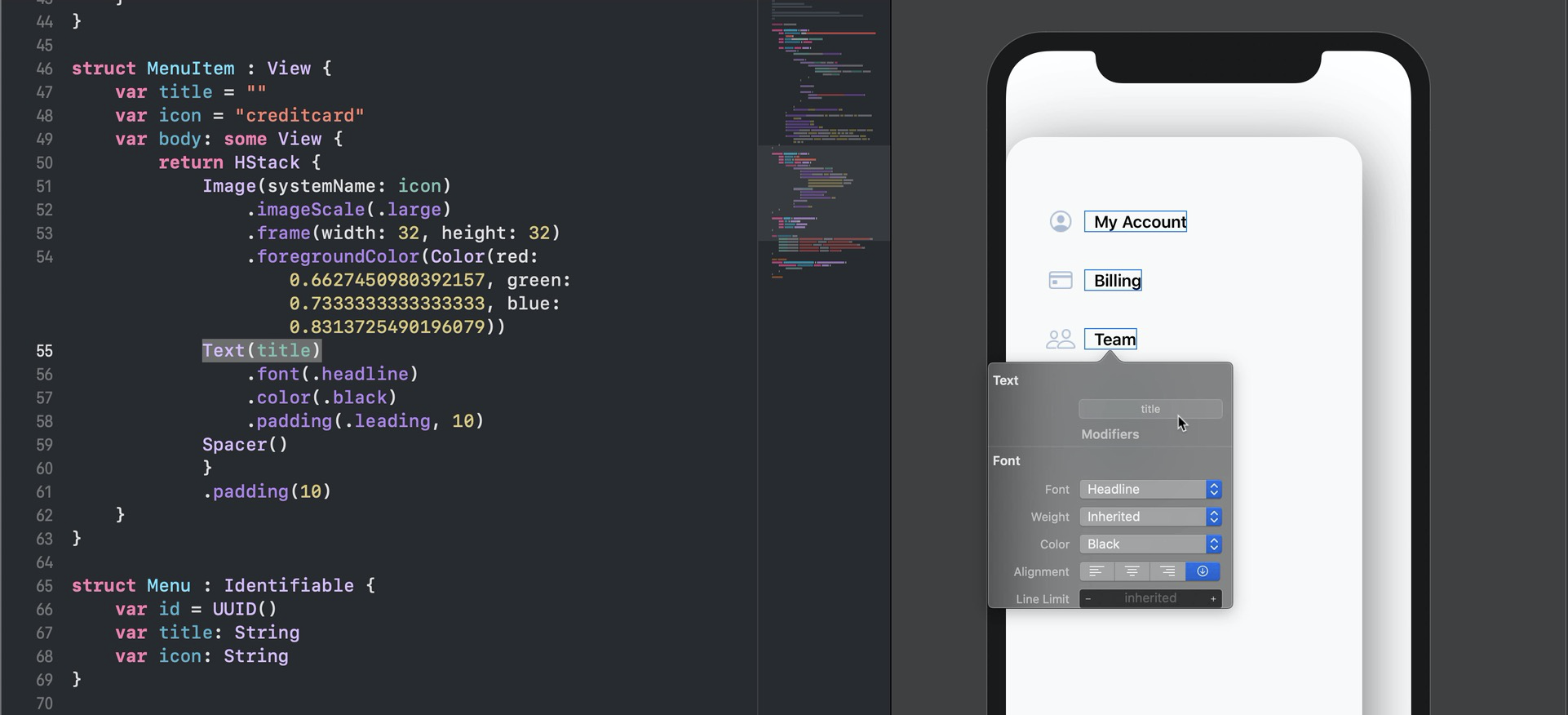

The one with a few choices at the bottom, and you can completely switch what’s in the screen by tapping the icon / label. As an image expands to the right, it pushes the text in the same direction. It’s common in iOS apps to use a Tab View. Figure 5-3 shows the approximate areas for image and text. Here is how the overflow button looks after customization:Ī sample Overflow Button Customization example can be found in the TabView/Features folder - Tab View Header of the SDK Samples Browser application. These cell objects have two kinds of content: one or more text strings and, in some cases, an image. (new () ) Īdditionally, you can work with the already assigned header instead of replacing it with a new one. OverflowButtonTemplate = new DataTemplate(() =>īackgroundColor = (Color)(new ColorTypeConverter()).ConvertFromInvariantString("#CA5100"), Header = new ()īackgroundColor = (Color)(new ColorTypeConverter()).ConvertFromInvariantString("#293955"), HeaderPosition = TabViewHeaderPosition.Bottom, (by jasudev) Add to my DEV experience SwiftUI Swift segmented-controls segmented Segmentedcontrol Segment segmentedview segmented-view iOS MacOS tabview Tabbar Segmentation segments segment-tree.
#IOS TABVIEW HOW TO#
OverflowButton stylingĮxample how to set styling to OverflowButton This effect is also visible in the tab view of Mail and Safari. When IsScrollable is True, OverflowButton won't be visualized, instead you can scroll through the tabs. iOS is a mobile operating system created and developed by Apple Inc.

In addition you can decide whetehr scrolling inside the tabs will be allowed using the IsScrollanle bool property. The TabViewHeader allows you to style and customize the OverflowButton. The RadTabView control exposes a Header( ) property which you can use to modify the header's appearance. Do any additional setup after loading the view, typically from a nib.Here is the result how the TabViewHeaderItem with custom Control Template looks:Ī sample HeaderItem Custom Template example can be found in the TabView/Features folder of the SDK Samples Browser application. The ViewController.swift would contain another class CustomCell that implements the UITableViewCell protocol as shown below.IBOutlet var tableView: UITableView The IBOutlet attribute makes the tableView property visible in Interface Builder. Adding a label between the ImageView and the AccessoryType – checkmark and setting its constraints. Open the ViewController.swift class and add a new tableview instance variable below the class declaration.Let’s create a new SingleView Application project and get on with it. However, sometimes we might want to take more direct control over how an app’s. In this tutorial, we’ll be developing an iOS Application that contains a custom TableView with cells having a custom layout inclusive of images, label and a checkmark. Adding a TableViewCell and an ImageView in the cell and setting its constraints. By default, the various navigation APIs that SwiftUI provides are very much centered around direct user input that is, navigation that’s handled by the system in response to events like button taps and tab switching.Adding a TableView and setting its constraints.Also, the images that we would be displaying shall be present in the Assets folder. The project consists of a ViewController.swift class file which would hold the class for CustomTableViewCells too.

In this tutorial, we’ll be developing an iOS Application that contains a custom TableView with cells having a custom layout inclusive of images, label and a checkmark.


 0 kommentar(er)
0 kommentar(er)
